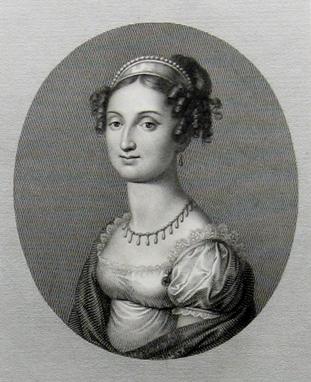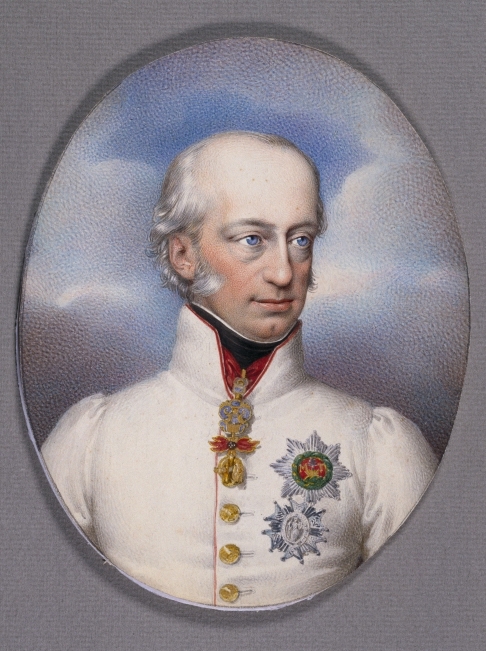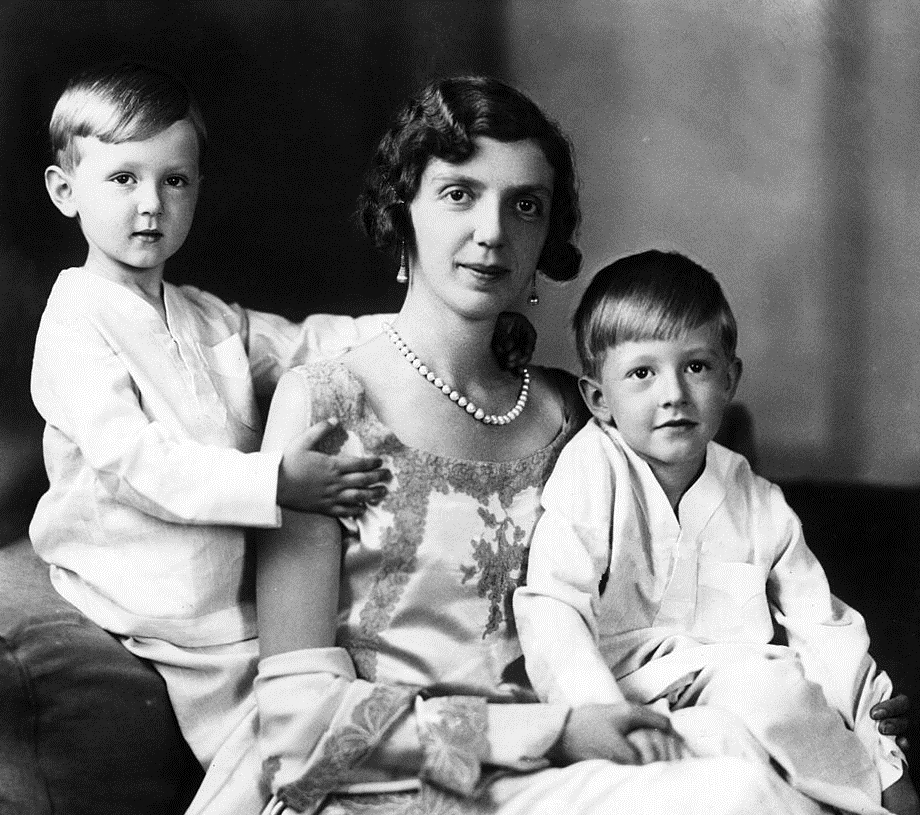by Susan Flantzer
© Unofficial Royalty 2021
The Grand Duchy of Tuscany was located in present-day northwest Italy. It existed, with a few interruptions, from 1569 – 1859. Tuscany was ruled by the de Medici family from 1434–1494 and from 1512 until the extinction of its senior branch in 1737. In 1569, Pope Pius V elevated Tuscany to a Grand Duchy and Cosimo I de’ Medici became its first Grand Duke.
In 1737, the House of Habsburg-Lorraine obtained control of the Grand Duchy of Tuscany. François Étienne, Duke of Lorraine exchanged the Duchy of Lorraine for the Grand Duchy of Tuscany. Stanisław I, the father-in-law of King Louis XV of France, had abdicated the throne of Poland in 1736 and now became the Duke of Lorraine.
Except for a period of thirteen years from 1801 – 1814 during the French Revolutionary Wars and Napoleonic Wars, the House of Habsburg-Lorraine retained the Grand Duchy of Tuscany until Tuscany was annexed to the Kingdom of Sardinia in 1860, as a part of the unification of Italy. In 1861, Vittorio Emanuele II, King of Sardinia was proclaimed the first King of the new, united Kingdom of Italy.
Two Grand Dukes of Tuscany were also Holy Roman Emperors: Francesco II Stefano, Grand Duke of Tuscany (reigned 1737 – 1765) also Franz I, Holy Roman Emperor (reigned 1745 – 1765) and Pietro Leopoldo I, Grand Duke of Tuscany (reigned 1765 – 1790) also Leopold II, Holy Roman Emperor (reigned 1790 – 1792).
********************

Maria Anna of Saxony, Grand Duchess of Tuscany; Credit – Wikipedia
Maria Anna of Saxony was the first wife of Leopoldo II, Grand Duke of Tuscany. Maria Anna Carolina Josepha Vincentia Xaveria Nepomucena Franziska de Paula Franziska de Chantal Johanna Antonia Elisabeth Cunigunde Gertrud Leopoldina was born on November 15, 1799, at the Royal Palace of Dresden in the Electorate of Saxony, now in the German state of Saxony. She was the fifth of the seventh children and the third of the four daughters of Maximilian, Hereditary Prince of Saxony and his first wife Princess Carolina of Parma. Maria Anna’s paternal grandparents were Friedrich Christian, Elector of Saxony, and Maria Antonia Walpurgis of Bavaria. Her maternal grandparents were Ferdinando, Duke of Parma and Maria Amalia of Austria.
Maria Anna had six siblings:
- Princess Amalie of Saxony (1794 – 1870), unmarried
- Maria Ferdinanda of Saxony (1796 – 1865), married Ferdinando III, Grand Duke of Tuscany (second wife), no children
- Friedrich August II, King of Saxony (1797 – 1854), married (1) Archduchess Maria Caroline of Austria, no children (2) Princess Maria Anna of Bavaria, no children
- Prince Clemens of Saxony (1798 – 1822), unmarried
- Johann I, King of Saxony (1801 – 1873), married Princess Amalia of Bavaria, had nine children
- Princess Maria Josepha of Saxony (1803 – 1829), married Ferdinand VII, King of Spain (third wife), no children

Leopoldo II, Grand Duke of Tuscany; Credit – Wikipedia
In 1817, Maria Anna became betrothed to the future Leopoldo II, Grand Duke of Tuscany. The couple had a proxy marriage on October 28, 1817, in Dresden, Kingdom of Saxony, now in the German state of Saxony. However, Maria Anna was so terrified of meeting her bridegroom that she refused to leave Saxony unless her sister Maria Ferdinanda accompanied her. Accompanied by her sister Maria Ferdinanda, Maria Anna finally met Leopoldo and they were married in person on November 16, 1817, at the Basilica of the Most Holy Annunciation in Florence, Grand Duchy of Tuscany, now in Italy.

Maria Ferdinanda, sister of Maria Anna, in the year of her marriage; Credit – Wikipedia
Four years later, when his son Leopoldo and his daughter-in-law Maria Anna had not produced any children, Ferdinando III, Grand Duke of Tuscany decided to marry twenty years after the death of his first wife Luisa of Naples and Sicily. During his son’s wedding celebrations, Maria Ferdinanda of Saxony, the sister of the bride, had caught the eye of Ferdinand III, who was twenty-seven years older than Maria Ferdinanda. He remembered Maria Ferdinanda and chose her as his second wife. They were married on May 6, 1821, in Florence. Ferdinando III hoped to have more children but his marriage to Maria Ferdinadna remained childless.

Maria Anna as Grand Duchess of Tuscany; Credit – Wikipedia
Three years after his second wedding, Ferdinando I, Grand Duke of Tuscany, aged 55, died on June 18, 1824, in Florence, Grand Duchy of Tuscany, now in Italy. Maria Anna’s husband succeeded to the throne as Leopoldo II, Grand Duke of Tuscany, and Maria Anna replaced her sister Maria Ferdinanda as the Grand Duchess of Tuscany. Maria Anna and her husband, were the founding patrons of L’Istituto Statale della Ss. Annunziata, the first female boarding school in Florence to educate aristocratic and noble young ladies. The school is still in existence.

The three daughters of Maria Anna and Leopoldo; Credit – Wikipedia
Maria Anna and Leopoldo eventually had children – three daughters who could not succeed to the throne. If Leopoldo did not have a male heir, the throne of the Grand Duchy of Tuscany would revert to Leopoldo’s Austrian Habsburg relatives.
- Archduchess Carolina Auguste of Austria (1822 – 1841), died in her teens
- Archduchess Auguste Ferdinande of Austria (1825 – 1864), married Luitpold, Prince Regent of Bavaria
- Archduchess Maria Maximiliana of Austria (1827 – 1834), died in childhood
Maria Anna’s inability to produce a male heir caused depression and coupled with her chronic ill health, made her developing tuberculosis more severe. The doctors advised Maria Anna to move to Pisa because of its milder and healthier climate. The entire court moved to Pisa in the winter of 1832 but Maria Anna showed no improvement. Her condition worsened in March 1832 and it became clear that she would soon die. Maria Anna serenely awaited her death with her confessor at her bedside but she regretted abandoning her husband and children. On March 24, 1832, 32-year-old Maria Anna died at the Royal Palace (link in Italian) in Pisa, Grand Duchy of Tuscany, now in Italy. She was interred at the Basilica of San Lorenzo in Florence in a beautiful red porphyry sarcophagus surmounted by a crown.
Maria Anna’s husband Leopoldo greatly grieved his beloved wife but because he had three daughters and needed a male heir to ensure the succession he married again the following year to his first cousin Maria Antonia of the Two Sicilies. Leopoldo and Maria Antonia had ten children including Leopoldo’s heir and the last Grand Duke of Tuscany, Ferdinand IV.
This article is the intellectual property of Unofficial Royalty and is NOT TO BE COPIED, EDITED, OR POSTED IN ANY FORM ON ANOTHER WEBSITE under any circumstances. It is permissible to use a link that directs to Unofficial Royalty.
Grand Duchy of Tuscany Resources at Unofficial Royalty
Works Cited
- En.wikipedia.org. 2021. Leopold II, Grand Duke of Tuscany – Wikipedia. [online] Available at: <https://en.wikipedia.org/wiki/Leopold_II,_Grand_Duke_of_Tuscany> [Accessed 27 September 2021].
- En.wikipedia.org. 2021. Princess Maria Anna of Saxony (1799–1832) – Wikipedia. [online] Available at: <https://en.wikipedia.org/wiki/Princess_Maria_Anna_of_Saxony_(1799%E2%80%931832)> [Accessed 27 September 2021].
- Flantzer, Susan, 2021. Leopoldo II, Grand Duke of Tuscany. [online] Unofficial Royalty. Available at: <https://www.unofficialroyalty.com/leopoldo-ii-grand-duke-of-tuscany/> [Accessed 27 September 2021].
- Flantzer, Susan, 2021. Maria Ferdinanda of Saxony, Grand Duchess of Tuscany. [online] Unofficial Royalty. Available at: <https://www.unofficialroyalty.com/maria-ferdinanda-of-saxony-grand-duchess-of-tuscany/> [Accessed 27 September 2021].
- It.wikipedia.org. 2021. Maria Anna Carolina di Sassonia – Wikipedia. [online] Available at: <https://it.wikipedia.org/wiki/Maria_Anna_Carolina_di_Sassonia> [Accessed 27 September 2021].
- Wheatcroft, Andrew, 1995. The Habsburgs. New York: Viking.
- Wilson, Peter, 2016. Heart of Europe – A History of the Holy Roman Empire. Cambridge: Belknap Press of Harvard University Press.
































